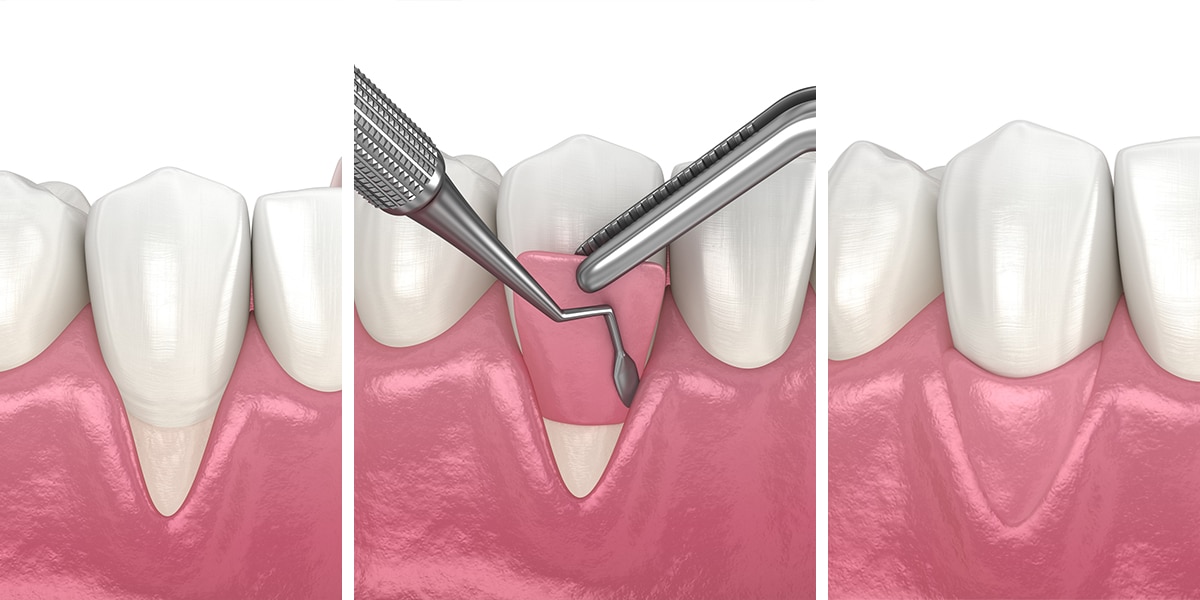
Oral Facial Surgery of Orange Park provides gingival grafting in Orange Park, Florida. Call 904-269-5195 or contact us today to learn more and schedule an appointment.
What is Gingival Grafting?
Gingival grafting is a procedure used to replace lost gum tissue. Receding gums may be caused by gum disease, brushing too hard, genetics, or aging. As the gum tissue gradually pulls away from the teeth they have less support and may become loose or sensitive. During a gingival (gum) grafting procedure, tissue is taken from another part of the mouth and applied to the teeth.
Benefits of Gingival Grafting
Gingival grafting offers many dental and oral health benefits:
Are You a Good Candidate for Gingival Grafting?
Do you have noticeably receding gums? The telltale signs of receding gums are long looking teeth, gaps between the gums and teeth, and a line or ridge on the tooth where the gum tissue used to be. If you have any of these signs, you may be a good candidate for gingival grafting. If receding gums is due to existing gum disease, the infection will need to be treated first before gum grafting can be done. A brief evaluation can help us determine if gum grafting is right for you.
What’s the gum graft recovery timeline?
Your surgeon will probably want to check on your gum graft one week later. Then, you’ll have routine follow-ups until your periodontist releases you back to your general dentist for continuing care.
During this time, they’ll provide you with specific instructions. In general, here’s what you can expect:
The first day
Following your procedure, you’ll experience some bleeding, swelling and discomfort. To manage these side effects, take all medications exactly as prescribed by your surgeon. Get lots of rest and avoid strenuous activities.
Eat soft, cool foods, such as yogurt, pudding, or smoothies.
Keep the surgical area clean using an antibacterial mouthwash. Don’t brush or floss directly on the gum graft, as this can damage it and lead to failure. (You can brush and floss your other teeth as your comfort level allows.)
The first week
Bleeding should subside within the first 24 hours to 48 hours. Swelling will continue for three to four days. You may also develop bruising during this time. These side effects are normal and should subside within the week. Continue taking all medications as prescribed.
You can incorporate more soft foods into your diet as you’re able, including things like eggs, pasta, fish and cooked vegetables.
Gently brush your teeth near the surgical site, but don’t brush directly on your gums. Don’t brush or floss around the gum graft until your surgeon says it’s safe.
The second week
Swelling and bruising should begin to fade, and your comfort level should continue to improve. Ask your surgeon when it’s safe to begin decreasing your medication dosage.
As your comfort level improves, you can incorporate more solid foods. However, you should still avoid hard, crunchy or spicy foods until your surgeon clears you.
Once your surgeon says it’s safe to do so, you can resume normal brushing and flossing.
Why Choose Oral Facial Surgery of Orange Park?
Our patients are our top priority, which is why we use minimally invasive techniques for gingival grafting that reduce discomfort and allow for faster healing and recovery. We also provide a variety of anesthesia and sedation options to help you feel as comfortable and relaxed as possible. Our office is equipped with the latest technology in dental and oral surgery for advanced diagnostics and surgical precision.
Frequently Asked Questions About Gingival Grafting
Gum tissue grafts offer a number of benefits. Including:
- Reduce your risk of gum disease.
- Reduce your risk of cavities. (Exposed teeth roots are vulnerable to decay.)
- Decrease tooth sensitivity.
- Improve the appearance of your smile.
Complications following gum graft surgery are uncommon, but they can happen. Possible complications include:
- Infection.
- Excessive bleeding.
- Rejection of the gum graft (failure).
If you notice heavy bleeding, pus or anything else that doesn’t look right, contact your surgeon right away.
To learn more, call 904-269-5195 or contact us today to schedule an appointment.
